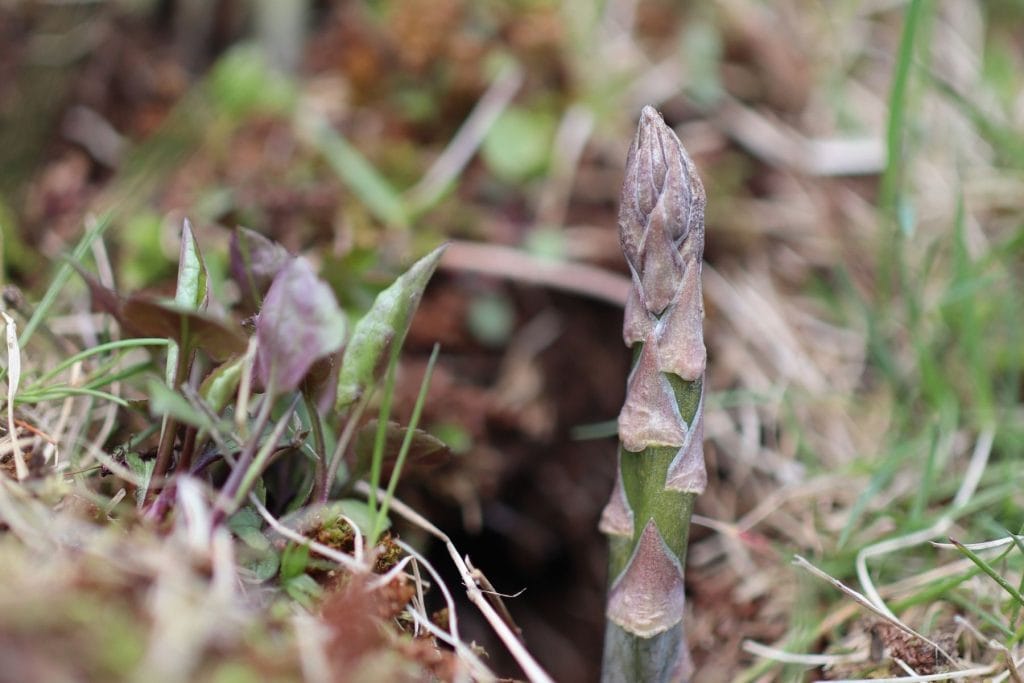Asparagus makes a beautiful edible landscape border plant. Harvest as usual, then let any remaining stalks form into beautiful edging foliage.

Yesterday, little Andrew, my neighbor’s son, came scurrying up to me as I was working in my front flower bed. He had a big basket with him, which he carried like a treasure.
“I accidentally dug up some of Mama’s asparagus bed while I was making a water wheel for my little mill that I was making out of rocks. And it was pretty great, too. But…I dug up some of Mama’s asparagus, and that wasn’t great. And she said that it was as good an excuse as any to send some over to you. She said she knew you’d like to grow some too?”
He looked up at me with his eager little face. That sweet boy is forever getting into mischief of one kind or another.
“I certainly would like to grow some asparagus,” I told him. “In fact, I have been meaning to start a patch here for some time.”
While the little penitent gobbled down a piece of gingerbread, I wrote a quick note for him to take back to his mother, letting her know how much I appreciate being made the beneficiary of such a transgression against her asparagus bed.
After sending Andrew back to his mother, I turned my attention to the asparagus bundles, meaning to get them planted immediately.

Before getting a shovel though, I went to my bookshelf. I knew I’d read an interesting idea about planting asparagus in the Farm and Household Cyclopedia. This book has a particularly excellent index, so I found the passage I was looking for right away:
Asparagus as a lawn plant:
A friend suggests a very good idea as to asparagus: “Of course the old plan of sticking the plants in close beds is all wrong. There are many bits of fine soil in gardens, even the so-called pleasure grounds and hardy plant borders, where a strong clump of the common asparagus would be a great ornament, as well as of use.
I shall plant a hundred of more good clumps of asparagus in our borders here, partly for its tender shoots in spring; partly for its spray for cutting during the summer and autumn months, but mainly for its feathery grace as a beautiful, hardy plant.
In many a villa garden, even where good asparagus may never be seen raised in the ordinary way, a capital supply could be obtained by simply dotting a few plants here and there in borders, and on the margins of shrubberies, not only as single specimens, but as groups and masses–never, however, nearer to each other than four feet.”

I decided to follow this advice, and disperse my new asparagus plants along borders and edges. Some went in near my daffodils, and others along a stone wall, near the lilacs. Even this year, I know they will add beautiful fronds to the border plantings. And next year, we will have our own asparagus!
I hope you found this idea about using asparagus as a lawn plant as interesting as I did. That Farm and Household Cyclopedia is a book I am so glad to have on my shelf!
With love,
Florence















Comments
No Comments